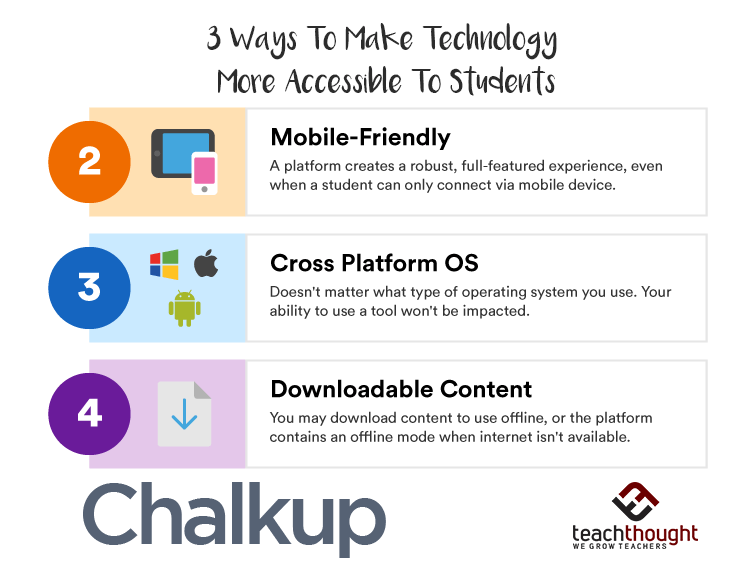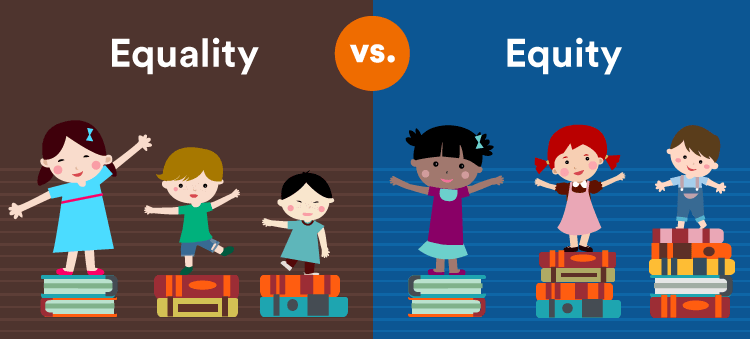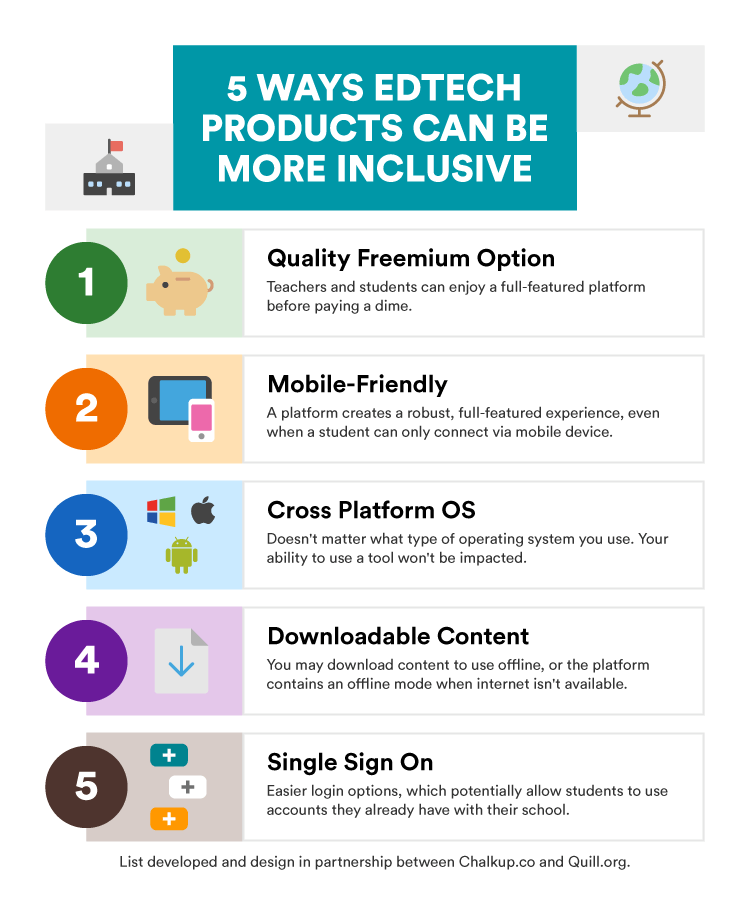
How To Make Technology More Accessible To More Students
by Jayne Miller, @chalkupedu & @quill_org
What good is technology if teachers and students don’t have access to it?
This was a big question posed during Digital Learning Day this year. Digital equality and digital equity were also terms our team heard again and again while connecting with educators at recent edu conferences.
As education changes and companies rise to the occasion, the new standard isn’t just about using tech to boost learning gains (even though that’s awesome) but to do so in a way that’s more accessible than ever before. So, as two edtech companies pen this piece, we ask ourselves: what should we be doing to increase digital access and equity nationwide?
The Issue
First, we need to understand – both as companies and a larger edu community – the issues we’re talking about.
The first is basic broadband access. A 2015 Pew report revealed that 15% of Americans families with income between $30-50k a year don’t have access to internet. That number is 26% of families with income below $30k annually. When we factor in mobile devices, we find that 10% of Americans own a smartphone but do not have any other form of high-speed internet access at home beyond their phone’s data plan.
Similarly, U.S. Census Bureau’s American Community Survey data indicates that “5 million households with school-age children do not have high-speed internet service at home.” In a nutshell: access isn’t there yet. Digital equity isn’t there yet. And we’re seeing a big homework gap because of it.
Take it from Jessica Rosenworcel, Commissioner of Federal Communications Commission: “There’s data out there that suggests seven out of ten teachers assign homework today that requires broadband access, but data from where I work at the FCC tells us that only one of three households have that access.”
After we jump the internet hurdle, there is still the question of digital tools that boost learning gains and classroom connectivity. And that do so in a way that’s beneficial to all students. This means freemium models, low-cost platforms and devices, smartphone-friendly programs, and tools that educators can use impactfully without a degree in instructional design.

Digital Equality vs. Digital Equity
Quick sidebar. We’re interested in exploring digital equity – how we engineer powerful learning experiences for all children that can yield the same learning outcomes and progress. Giving everyone access to an awesome edtech tool or going 1:1 with iPads sounds fantastic, but it doesn’t necessarily guarantee such equity.
Edtech is rising. It’s growing and doing more for schools. And we’re genuinely interested in being part of that growth and change. But when we innovate, we don’t want it to be for a select few classrooms. We want it to be for any student who could benefit from what we’re doing. That’s why we we’re listening. That’s why recent pieces about homework gaps and the digital divide have us paying attention.
One more reason. Want to be super cynical for a hot second? We’re still businesses. We make edtech tools for schools. And more kids with access to our platforms means more potential business for us. Advocating for greater digital access is both the right thing to do and the smart thing to do.
A Few Ideas About What We Can Do
We’ll get the conversation started. We can think of a handful of things that companies like us can be doing to increase equity when our tools are given to an entire classroom. This includes designing tools that are mobile-friendly and operating system agnostic (so no matter what device you’re on, it’s easy to use the edtech tool you’ve chosen).
We have also found that creating tools that are free for teachers and students yields opportunity to experiment, take risks, and ultimately find tech that is the best match for their needs. And all before a penny is spent or processes are scaled to serve dozens of classrooms at once.
Getting further into the weeds, we’ve considered ways we can ensure all students have a meaningful experience with a tool by making it easier to use. Regardless of a teacher’s comfort level with a platform, students should have impactful interactions with a tool across classes.
A few more ideas? The way we see it, our companies will always be advocates of initiatives that expand digital access to all members of a school community. Examples include proposals from both the government and private sector to provide free internet access to all Americans. This is awesome. So is this. All about it.
Digital equity is a bigger, hairier question for us. And it’s at the heart of why we wanted to write this piece. So tell us (this is a genuine question, not some rhetorical nonsense to make a point), how can we – edtech companies – meaningfully contribute to ensuring greater digital equity for students? We’ve both learned a few things as far as product design goes that make learning experiences more equitable from class to class, but what else is out there that we’re missing?
5 Ways To Make Technology More Accessible To More Students

Conclusion
Beyond advocating for initiatives that do what we cannot – like getting students broadband outside of school – what should we prioritize? Tell us in the comments. Tweet at our organizations (@chalkupedu and @quill_org). We’re interested in closing the gap, too.
Chalkup is a next-generation learning management system that integrates seamlessly with Google Drive for rubrics, assignments, discussions, and more. Quill is a free literacy tool that provides writing, grammar, and vocabulary activities to middle and high school students.
